Strength of mentality, discipline, adaptability and an understanding of the basics are all skills that cross between the fields of tennis and string playing, writes cellist and tennis enthusiast Davina Shum

Discover more Featured Stories like this in The Strad Playing Hub
If you’re a tennis fan like I am, no doubt you’re enjoying the summer hard-court swing, with the US Open currently in its second week at Flushing Meadows. I’ve always been interested in interdisciplinary transfer of skills, particularly pertaining to string playing, so as I’ve spent plenty of time this summer watching matches, it’s no wonder I’ve had some time to ponder what string players can learn from tennis players.
Both crafts require a high level of sustained performance, often in high-pressure situations that require solid mental fortitude. There are examples of players from both fields that have been described as other-worldly – the beautiful, one-handed backhand of Roger Federer comes to mind, or how Jacqueline du Pré managed to inspire a generation of musicians through her impassioned recording of the Elgar Cello Concerto. The parallels between music and tennis are not new, with many musicians citing W. Timothy Gallwey’s The Inner Game of Tennis as essential reading for working on a performer’s mindset (indeed, this inspired the book The Inner Game of Music, to which Gallwey also contributed with Barry Green). But as the final Grand Slam of the year takes place this week, it presents a good opportunity to highlight some inspiring examples from the tennis world that can be applied to string playing.
The importance of basics and fundamentals
It’s easy to watch a tennis match and be wowed by trick shots that often arise throughout a game. However, it’s important to remember that the freedom to pull off those shots on demand must stem from a good understanding of basic techniques and fundamentals. As cellist Gabriel Schwabe said to me earlier this year in an interview, ‘technique is the ability to make the right sound at the right time.’ We need the right tools in our arsenal and to know when and where to use them. Those virtuosic runs in Tchaikovsky’s Rococo Variations aren’t going to play themselves without a good understanding of scales and right-hand technique!
When tennis players go on court to practise, they’re focusing on their basic skills. Violinist Max Baillie highlighted this to me in conversation recently: ‘They’re going out there and practising their forehand, and then they practise their backhand. It’s not like they’re doing these weird, fancy trick shots. They’re practising their forehand, over and over again.’ They also practise their footwork, as well as drills, such as retrieving balls from different parts of the court to test their direction-changing skills (giving off Labrador Retriever vibes). These drills are a bit dull to watch, but in the same way that your practice session of Ševčík exercises isn’t going to be the most enthralling thing to witness – rather, it will give you the tools and framework to help you achieve your musical goals.
KAROLINA MUCHOVA WITH THE SHOT OF THE YEAR!! 🤯 pic.twitter.com/GnSqWWwbxn
— US Open Tennis (@usopen) August 27, 2024
Karolina Muchova’s done some practice in her day…
Adaptability of environment
Tennis matches throughout the year take place on three different surfaces: clay, grass and hard court. Each of them requires the player to adapt their playing style, due to difference in ball response and how it feels under the players’ legs. It’s a bit like the difference between playing in a concert venue that’s super dry, to one with lots of resonance. Or if you’re used to playing on gut strings, having to adapt to the response of modern strings.
Wherever you are, a player needs to assess how the environment impacts their playing and take feedback from their surroundings. As a string player, you’re not going to sound the same in the concert hall as the practice room. I always feel a bit sorry for pianists as they don’t have the luxury of playing the same instrument at each performance and instead have to get used to whatever piano is at the concert venue – likewise, tennis players will take the time to acclimatise to different courts and stadiums.
Mentality and belief
In the 2023 Australian Open, Andy Murray was down two sets against Thanasi Kokkinakis, trailing 5-2 in the third set, with Kokkinakis ready to take the match. Yet Murray, against the odds, managed to pull off an impressive victory in five sets, in a gruelling match that lasted five hours and 45 minutes and ended at 4.05am. How did he do it? It would be easy to give up and concede the match. But what is so impressive about tennis players is the ability to dig deep and find a way to deliver at the most pressing time. For these players, it starts with belief – Murray would not have bothered to fight for the match if he didn’t think he had a chance.
Perhaps as string players, we’re not faced with such dire situations (and certainly not under international, televised scrutiny) but maybe you’re faced with a daunting orchestral solo, or an exposed, difficult passage. Providing you’ve practised and prepared adequately, why wouldn’t you be able to deliver that passage when required? Hopefully you’ve got the skill set to deliver when it’s needed thanks to prior preparation, so it’s down to focusing and being in the moment. It’s so much easier said than done, but it’s harder to deliver something once you start having those thoughts of self-doubt.
Read: Why cellists make good marathon runners
Read: Musicians and exercise: Can a keep fit regime make you a better string player?
Self-assessment and improvement
Top-seeded tennis player Iga Świątek recently said in a press conference that even though she was number one in the world, she still had a lot to work on. While the 23-year-old has captured a remarkable achievement of holding the top spot in women’s tennis for nearly 120 weeks now, she recognises that she can’t keep playing the same tennis over and over – as her opponents analyse her playing style and strategies, she needs to ensure she keeps her game up constantly.
It’s fair to say that once you embark on a musical journey, you never ‘complete’ music. You’re always listening to yourself and others as you continue working, learning, improving and setting new goals. Świątek’s recent comments echo that of the great cellist Pablo Casals, who when asked why he still practised every day at the age of 67, famously replied, ‘Because I feel I’m making daily progress.’ In the same way that no two tennis matches are the same, no two performances will be the same either (even if it’s the same repertoire) – because that would be boring, right?
Acknowledging injuries
It’s admirable to see the way the injured tennis players take the time to fully recuperate before returning to the game. Top male seed Jannik Sinner opted out of the Paris Olympics because he had tonsilitis, while Aryna Sabalenka withdrew from tournaments this year to recover from a shoulder injury. Having now recuperated, both players are now considered top contenders for the US Open singles titles at the end of this week (provided they haven’t been defeated before this gets published). Other players, such as Naomi Osaka and Amanda Anisimova have taken extended breaks to tend to their mental health.
I think we’ve probably heard about string players who keep knowledge of their suffering to themselves, because of the stigma attached to sustaining such injuries. Although, as classical musicians, most of us don’t have the buffer of millions of dollars of prize money to take an extended break from work! However, it’s a fair to point out that a break can help you sustain your musical career in the long run – while it may be a bump in the road, taking that time off may ensure that you come back to your craft stronger and more invigorated than before.
Practising with others
The only shot you play by yourself in tennis is your serve. The rest of it requires a return, so tennis players will team up with a hitting partner so they can practise their shots. Not only that, but playing doubles is a lesson in co-operation, communication and teamwork. Having two people covering either side of the court requires you to take on different roles as a player and it’s often said that playing doubles makes you a better singles player.
The same can be said of chamber music. You become a more versatile musician. As a tennis player gets comfortable playing both at the baseline and up at the net, a cellist playing duos has to be comfortable playing the bass-line as well as up high (sorry). Plus, having an extra pair of ears on your playing offers invaluable perspective.
Tennis players have to think about strings too!
For a minute, I thought I was reading a stringed-instrument article…

Read: Tennis superstar Novak Djokovic swaps racquet for the viola
Read: Scaling the walls: what musicians can learn from bouldering
Discover more Featured Stories like this in The Strad Playing Hub
The number one source for playing and teaching books, guides, CDs, calendars and back issues of the magazine.
In The Best of Technique you’ll discover the top playing tips of the world’s leading string players and teachers. It’s packed full of exercises for students, plus examples from the standard repertoire to show you how to integrate the technique into your playing.
The Strad’s Masterclass series brings together the finest string players with some of the greatest string works ever written. Always one of our most popular sections, Masterclass has been an invaluable aid to aspiring soloists, chamber musicians and string teachers since the 1990s.
American collector David L. Fulton amassed one of the 20th century’s finest collections of stringed instruments. This year’s calendar pays tribute to some of these priceless treasures, including Yehudi Menuhin’s celebrated ‘Lord Wilton’ Guarneri, the Carlo Bergonzi once played by Fritz Kreisler, and four instruments by Antonio Stradivari.






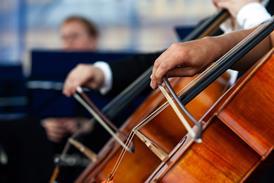



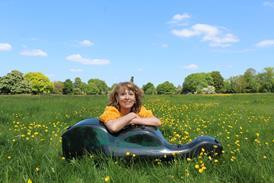

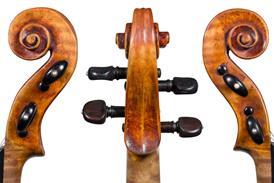

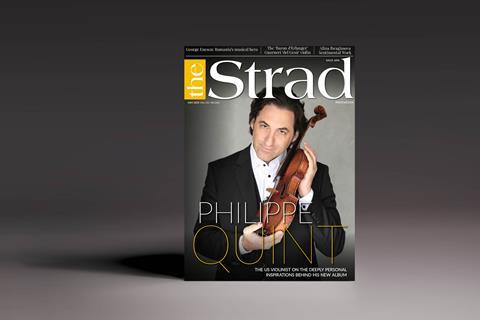









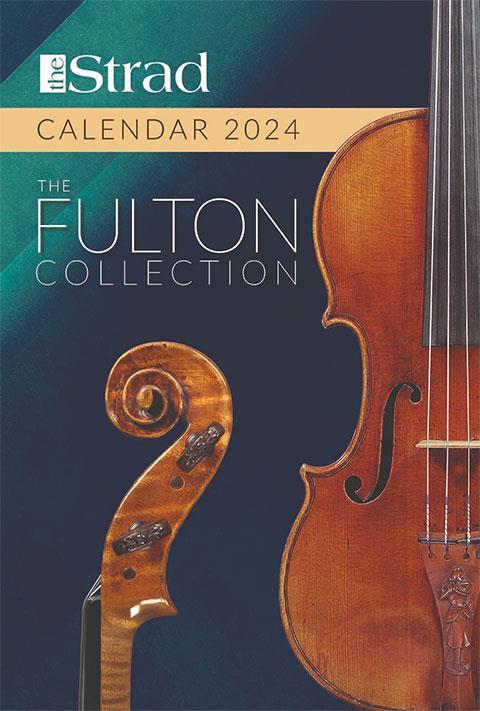












1 Readers' comment